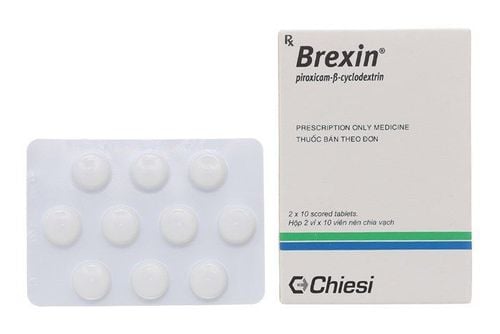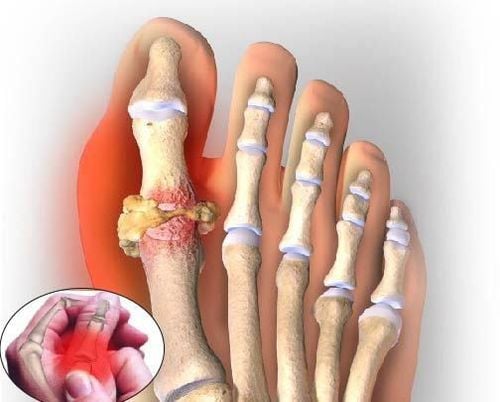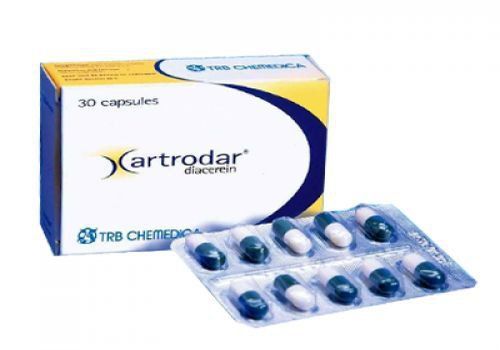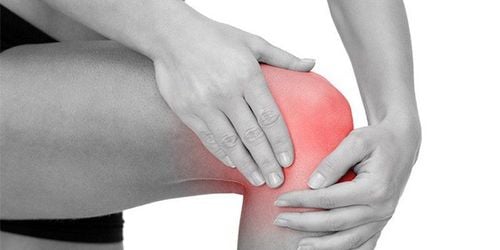This is an automatically translated article.
Joints have a particularly important job to help support as well as support flexible movements of the body. Joint medical problems appear often as a result of arthritis or an injury. So, taking good care of your joints will bring many health benefits. This article will present some simple things you can do to take care of and improve the condition of your joints.
1. Problems of the joints
Just as tires wear down over time, the cartilage that cushions your joints can also be damaged. It's a condition called osteoarthritis. And without enough padding, your bones hurt when they rub against each other.
Cartilage that is shed cannot heal or grow back. Orthopedic surgeons say: There is no way to reverse arthritis once it has started. But there are a few ways you can take care of your joints to help ease the pain and protect the cartilage you still have. Use these tips to slow damage.
2. Some ways to take care of joints
2.1. Weight loss
Lose weight if you are overweight. This activity will help you reduce the stress on your body's knees and hips. When you lose 0.5kg of weight, you will remove 2kg of pressure from your knees. It is this activity that will help reduce wear and tear in the joints. So you can adopt weight loss methods that can actually slow the progression of arthritis if you lose a significant amount of weight. Researcher Charles Bush-Joseph, MD, of Rush University Medical Center says, “For every 10 pounds you lose, you reduce pain by 20%.
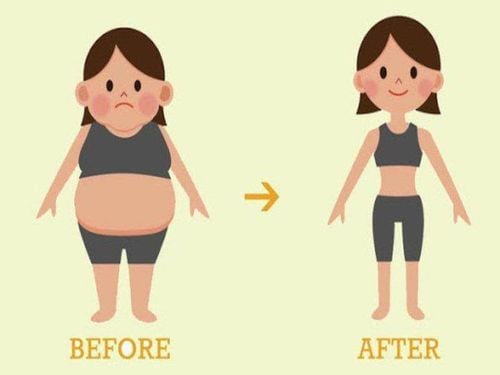
Giảm cân sẽ giúp giảm căng thẳng cho đầu gối và hông của cơ thế
2.2. Do aerobics
Joint pain or osteoarthritis may make you reluctant to exercise, but research shows that pain and stiffness get worse when you don't move enough or don't exercise regularly. Regular exercise helps the heart pump blood will promote blood flow, helping cartilage to be well nourished. And one more benefit, it will help you achieve the right weight.
Experts recommend that you be as active as possible. But you should also avoid high-impact activities, like jumping and running. The best activity options include: Walking, biking, and swimming. Alternatively, you can set a goal for your daily activities with a 30-minute interval of aerobic exercise at least 5 days a week.
2.3. Build stronger muscles around your joints
The process of building muscle around joints can help your body take some of the shock that normally passes through your joints as you move around during the day. A strong muscle will prevent a limb from hitting the pavement and causing a jarring joint.
You should try to do activities that build the muscles that surround your joints. For example, to improve knee symptoms, strengthen the quadriceps in the front of your thighs. A physical therapist or personal trainer experienced in working with people with arthritis can show you exercises that will be helpful.
2.4. Stretch your muscles every day
The stretching process will help you improve joint mobility. At the same time, this process not only resists hardening, but also helps to protect the cartilage from further wear and tear.
Experts say: The more joints you move, the more cartilage is nourished by synovial fluid. Therefore, you should practice yoga or Pilates to make your activities more flexible.

Căng cơ giúp cải thiện khả năng vận động của các khớp
2.5. You should try glucosamine and chondroitin supplements
Glucosamine and chondroitin can both help protect your cartilage, although there's no evidence that either will rebuild it or potentially slow your arthritis. Some studies show that these two compounds can help improve pain.
2.6. Use over-the-counter pain relievers for flare-ups
Some common types, naproxen (Aleve), ibuprofen (Advil, Motrin), aspirin, and acetaminophen (Tylenol) may be used to improve acute joint pain. However, before deciding to choose one of these drugs, you should go to the doctor to check with your doctor as well as so that the doctor can advise and prescribe the drug that you should use for the right purpose. match your actual situation. Also, before using any medication you should make sure to read the label and only take it as directed.
Experts say over-the-counter pain relievers are a good option for short-term pain relief during flare-ups of arthritis pain. If you think you need one dose a day, talk to your doctor. If you end up taking it for months or years, it may be time to think about joint replacement surgery.

Sử dụng thuốc giảm đau để cải thiện tình trạng đau khớp cấp tính
2.7. Some other ways joint care can be applied
Use your joints wisely It sounds obvious, but remember that larger, stronger joints can take more load than smaller joints. So instead of opening the door with your hand and wrist, for example, try leaning on it with your shoulder and hip. And if you need to carry heavy loads, spread the weight evenly across multiple joints: pack a backpack or use a crossbody bag with a shoulder strap, instead of carrying the bag in your hand.
Choose the right shoes Always make sure you wear comfortable and supportive shoes. And remember, your feet can change shape as you age, so it's a good idea to have them measured by an experienced footer, as you may need a different size or width.
Never ignore an injury Even the most innocuous bump can contribute to cartilage breakdown and increase the risk of severe joint pain or osteoarthritis, especially as this often occurs. out in the elderly.
So if you have a persistent injury or recurrent pain, have your GP check it out. The sooner you act, the easier and quicker the resolution will be.
Stop smoking According to researchers in Sweden, smoking just a few cigarettes a day can double the risk of rheumatoid arthritis.
Eat some salmon... or fresh mackerel, sardines or tuna A study in Sweden found that regular consumption of omega-3 fatty acids - antioxidants found in oily fish, can reduce half the risk of rheumatoid arthritis.
Women whose dietary intake of omega-3s regularly exceeded 0.21g per day - that's at least one serving of oily fish per week had a 52% lower risk of disease than women regularly eat less than 0.21g.
When applying joint remedies successfully, ask your doctor about injections. Corticosteroid injections are great for short-term flare-ups. Or Hyaluronan injections can also be helpful for medical problems with joints. These compounds can act as a lubricant and anti-inflammatory in your joints.
Vinmec Hai Phong International General Hospital has been implementing a PRP treatment package for musculoskeletal conditions with the following advantages:
The process is completely closed: The treating doctor will draw blood and prepare it. plasma, performing injection technique under modern ultrasound machine. PRP injections for arthritis are supported by the GE Healthcare S9 ultrasound machine: precisely locate the injection site quickly, optimizing the treatment time. The team of doctors has extensive professional experience and is well-trained. Leading the musculoskeletal team at Vinmec Hai Phong General Hospital, Especially with the application of PRP (platelet-rich plasma) injection in the treatment of shoulder arthritis, it will help to overcome the disease effectively, with a high success rate. High and reduced side effects compared to conventional treatments (NSAIDs, corticosteroid injections)
Please dial HOTLINE for more information or register for an appointment HERE. Download MyVinmec app to make appointments faster and to manage your bookings easily.
Reference source: webmd.com




